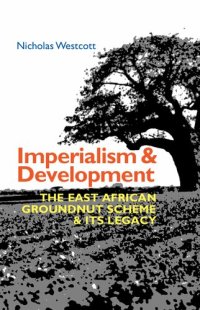
Ebook: Imperialism and Development: The East African Groundnut Scheme & its Legacy
Author: Nicholas Westcott
- Series: Eastern Africa Series
- Year: 2020
- Publisher: James Currey
- Language: English
- pdf
As colonial development took off after the Second World War, in the context of national food shortages, Britain's Labour Government initiated the Groundnut Scheme, an extraordinarily ambitious project to convert 3 million acres of bush in Tanganyika into the largest mechanized groundnut farm in the world. It was to prove the largest, most expensive and most disastrous development scheme ever undertaken by the British Government. Never previously analysed in depth, the author draws on a wide range of sources to discuss the political dynamics that drove the Groundnut Scheme forward, despite the gravest doubts of agriculturalists and economists, why it went wrong, and what its impact has been since on the practice of economic development.
Initially employing the United Africa Company as agent, the government set up an Overseas Food Corporation to manage the Groundnut Scheme as an example of socialist development in Africa. Army surplus kit and demobbed soldiers poured into the country and were sent up the railway line to Kongwa to beat the bush. By the time the effort was abandoned in 1950, costs had risen to a colossal 36 million - equivalent to over 1 billion today - and yet almost no groundnuts had been exported. The prototype of many large-scale, government-run, high-cost development projects that failed to deliver, the Groundnut Scheme was perhaps the first major failure of agricultural development in Africa, and its legacy in development practice still with us today.
Table of Contents
Introduction
Austerity
A Scheme is Born
"The Poison of the Official Pen ..."
The Groundnut Army
Beating about the Bush
The Overseas Food Corporation
1949: The Crisis
The Last Chance
A Sudden Death
Legacy and Lessons
Initially employing the United Africa Company as agent, the government set up an Overseas Food Corporation to manage the Groundnut Scheme as an example of socialist development in Africa. Army surplus kit and demobbed soldiers poured into the country and were sent up the railway line to Kongwa to beat the bush. By the time the effort was abandoned in 1950, costs had risen to a colossal 36 million - equivalent to over 1 billion today - and yet almost no groundnuts had been exported. The prototype of many large-scale, government-run, high-cost development projects that failed to deliver, the Groundnut Scheme was perhaps the first major failure of agricultural development in Africa, and its legacy in development practice still with us today.
Table of Contents
Introduction
Austerity
A Scheme is Born
"The Poison of the Official Pen ..."
The Groundnut Army
Beating about the Bush
The Overseas Food Corporation
1949: The Crisis
The Last Chance
A Sudden Death
Legacy and Lessons
Download the book Imperialism and Development: The East African Groundnut Scheme & its Legacy for free or read online
Continue reading on any device:

Last viewed books
Related books
{related-news}
Comments (0)